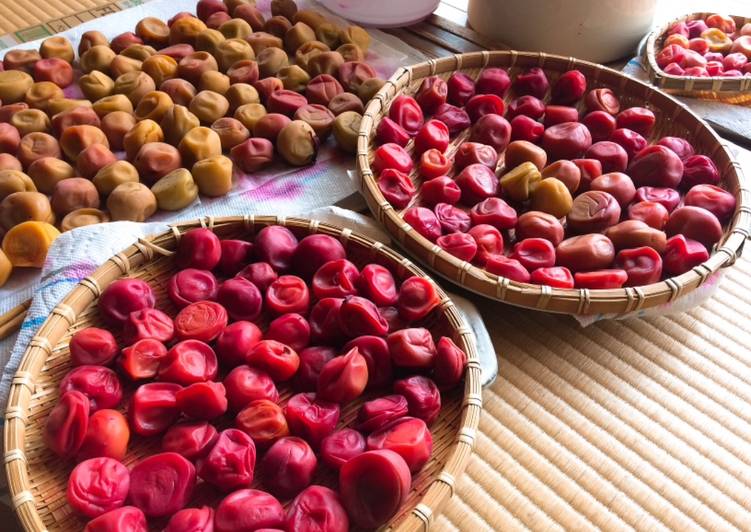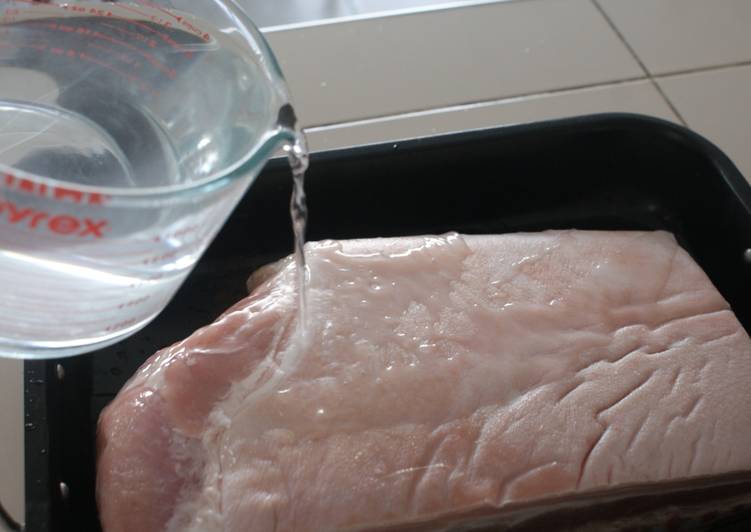
Hello everybody, it is Louise, welcome to our recipe site. Today, I will show you a way to prepare a distinctive dish, umeboshi- japanese pickled plums / salt-preserved plums. It is one of my favorites food recipes. This time, I will make it a bit tasty. This will be really delicious.
Wash plums gently, remove hulls with a bamboo stick, and dry well with paper towels one by one. Please make sure the plums are dried well otherwise the moisture of plums will cause growing mold in the jar. Re: Homemade Umeboshi (Japanese salty pickled plums).
Umeboshi- Japanese pickled plums / salt-preserved plums is one of the most favored of recent trending meals on earth. It’s easy, it is fast, it tastes yummy. It is appreciated by millions daily. Umeboshi- Japanese pickled plums / salt-preserved plums is something that I have loved my entire life. They are fine and they look fantastic.
To begin with this recipe, we have to first prepare a few components. You can have umeboshi- japanese pickled plums / salt-preserved plums using 4 ingredients and 7 steps. Here is how you can achieve that.
The ingredients needed to make Umeboshi- Japanese pickled plums / salt-preserved plums:
- Prepare 2 kg ripe plums
- Take 300 g salt
- Make ready 300 g Red shiso leaves (if you have)
- Take 2 Tbs salt
Umeboshi, Japanese salted plums, are a delicacy often enjoyed with rice. Here's a traditional method for making them. This recipe is reprinted with permission from Preserving the Japanese Way: Traditions of Salting, Fermenting, and Pickling for the Modern Kitchen by Nancy Singleton Hachisu. Ume (梅) or umeboshi (梅干し) is Japanese salted plums or Japanese pickled plums.
Instructions to make Umeboshi- Japanese pickled plums / salt-preserved plums:
- Wash plums gently, remove hulls with a bamboo stick, and dry well with paper towels one by one. Please make sure the plums are dried well otherwise the moisture of plums will cause growing mold in the jar.
- Place the plums in a clean jar, add the salt and mix well with a sanitized spatula or your hands with gloves on to make sure that inside of the jar is kept clean. Put plastic wrap over the plums (making it stick to the surface of the plums) and put a drop lid or flat plate on the plastic wrap. Then put 4kg weight on the plate. A few days later, you will see some quantity of water may be released from the plums, then reduce the weight to 2 kg. Leave it for a week in cool, dark place.
- One week later, you will see a lot of water released from the plum and find red shiso begins on the market.Remove the stems from the red shiso and wash it. Place the leaves into a bowl, add of salt and rub it with your hands and squeezing the leaves to remove any moisture. Do the same thing again with the last salt.
- Place the leaves into a clean bowl, add 1 cup of plum juice from the jar, mix well and put it back on top of plums in the jar. Put plastic wrap over it again (making the wrap stick to the surface of the shiso leaves) and put back the drop rid or flat plate on. No need to put the weight this time. If the jar has it's own lid, put the lid on.
- When the rainy season is over (a few weeks later from the red shiso is added to the jar), take all the plums and the red shiso leaves out from the jar, place them onto sieves or flat strainer and let them spread over sieves in a single layer. Let them sun dry, from a few hours, up to 3 days.
- Please keep the liquid. we call it ume-zu(plum vinegar) and you can use it for cooking as you use vinegar for your cooking.
- The dried plums should be kept in a sanitized jar with lid and will remain good for many years. Put the dried shiso leaves in a food processor and make it into coarse powder, then it'll be delicious furikake seasonings. (Furikake is toppings for rice. You can sprinkle furikake on your rice)
It is a popular kind of Japanese pickles (Tsukemono) and they are extremely sour and salty. We usually serve umeboshi with rice or rice balls (onigiri). Among all kinds of umeboshi, Nanko Plums (南高梅 なんこ. ··· Organic "Ryujin"Umeboshi Salted Pickled Plum. Umeboshi plums have a long history, and have been used over thousands of years to cure dysentery, fight typhoid fever, and help with food poisoning. Japanese samurai soldiers took umeboshi with them while going to battle, because the fruit was preserved and able to be stored for an indefinite amount.
So that’s going to wrap it up with this special food umeboshi- japanese pickled plums / salt-preserved plums recipe. Thanks so much for reading. I am confident you will make this at home. There’s gonna be more interesting food in home recipes coming up. Remember to save this page on your browser, and share it to your loved ones, colleague and friends. Thank you for reading. Go on get cooking!


